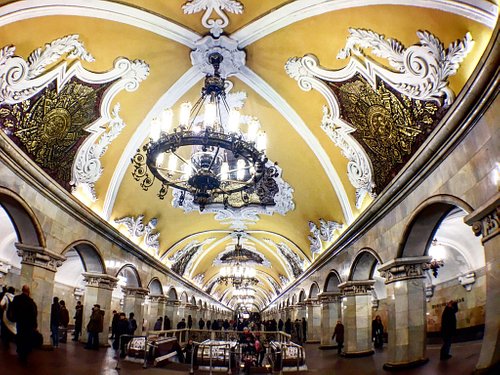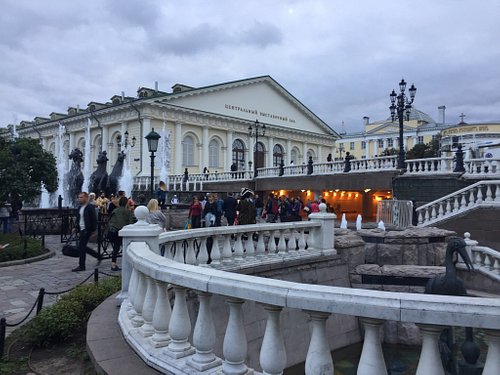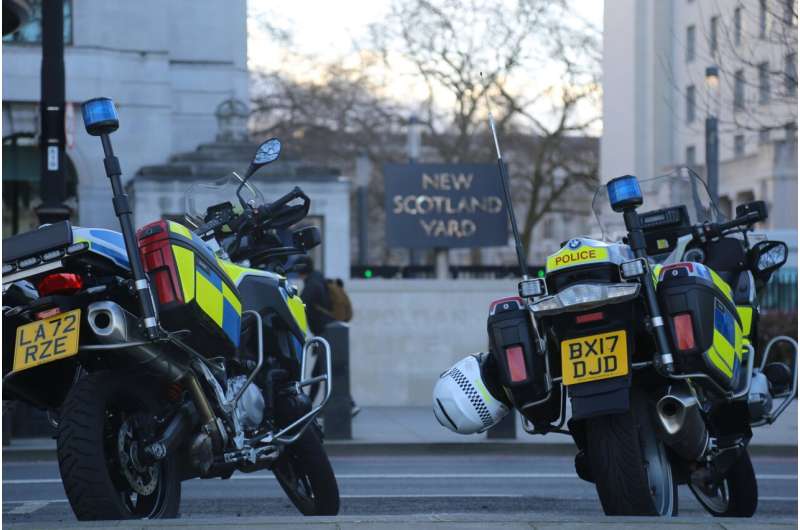the conscious tourism academic
| exploring possibilities of bridging tourism research and practice | a conscious resource use in tourism


Mind the gap.
What happens on a travel trip- stays on a travel trip. When traveling or being on vacation rules feel loose, consequences far away and a conscious resource use doesn’t feel as important anymore. In relation to tourism Dolnicar and Leisch (2008) highlight in their study that customers feel more morally obliged in their home environment to act environmental friendly than when being on vacation.
Research Summary
Belk, Devinney and Eckhardt (2005) explain that a gap between stated intentions and actual behaviour is common to exist throughout industries. A so called green gap is visualised by a study conducted by Bennet and Williams (2011) in the United States of America. Results show that 82% of the interviewed individuals have “good green intentions”, only 16%, however, dedicate their actions to fulfil them. Tourism actors need to mind the gap.
Which practical reasons can be identified for this gap?
- Green purchasing options may require a behaviour which is too costly in a financial, social and practical manner (Mahoney, 2011; Gleim & Lawson, 2014; Barbarossa & Pastore, 2015).
- The supply side does not enable customers to continue their environmentally friendly behaviour during their stay in a tourist destination (Dolnicar & Leisch, 2008).
- A poor perception of the green options’ quality may hinder a purchase (Gleim & Lawson, 2014).
- Greenwashing actions harm the consumers’ trust and increase fear of mistakenly purchasing not green options (Kangun, Carlson & Grove, 1991; Gleim & Lawson, 2014). As a result customers will not buy green options at all, as they trust the known “normal product”.
- The low availability of green products and services limit the customers’ possibilities to choose green options (Barbarossa & Pastore, 2015).
- Consumers’ lack of knowledge in regard to consumer effectiveness, while choosing green options, enhances the gap further as consumers wonder what difference they are able to make on their own (Gleim & Lawson, 2014).
Do you already have some ideas on how to address the gap within your context? Perfect! Make sure to implement your ideas in your operations and let us know about the progress. Simultaneously, we are working on providing further ideas on how to continuously narrow the gap. Stay tuned.
References:
- Barbarossa, C., Pastore, A. (2015). Why envionmentally conscious consumers do not purchase green products. Qualitative Market Research: An International Journal, 18 (2), 188-209.
- Belk, R.W., Devinney, T., Eckhardt, G. (2005). Consumer ethics across cultures. Consumption Markets & Culture, 8 (3), 275-289.
- Bennett, G., Williams, F. (2011). Mainstream Green: Moving sustainability from niche to normal. The Red Papers. No. 4, Ogilvy & Mather.
- Dolnicar, S., Leisch, F. (2008). An investigation of tourists’ patterns of obligation to protect the environment. Journal of Travel Research, 46 (4), 381-391.
- Gleim, M., Lawson, S., J. (2014). Spanning the gap: an examination of the factors leading to the green gap. Journal of Consumer Marketing, 31 (6/7), 503-514.
- Kangun, N., Carlson, L., Grove, S. J. (1991). Environmental advertising claims: a preliminary investigation. Journal of Public Policy & Marketing, 10 (2), 47-58.
- Mahoney, S. (2011), Study: green gap is bigger than ever, Retrieved from www.mediapost.com/publications/article/148938/study-green-gap-is-bigger-than- ever.html, viewed 16.02.2020.
Copyright © 2019 – 2024 the conscious tourism academic. All Rights Reserved. - Terms & Conditions - Privacy Policy

Tourism in the City pp 51–66 Cite as
Mind the Gap: Reconceptualising Inclusive Development in Support of Integrated Urban Planning and Tourism Development
- Lauren Uğur 3
- First Online: 30 August 2016
3898 Accesses
3 Citations
This chapter proposes a model of integrated access in the promotion of an integrated agenda for urban planning and urban tourism development. The underlying assertion of the conceptual framework presented is that sustainable urban tourism development is reliant on inclusive development that works to balance the needs of both visitors and locals in the production of urban tourisms. The core challenge in achieving an integrated approach lies in the identified disconnect between existing tourism development and urban planning practices. In addressing this challenge, a reconceptualisation of inclusive tourism development is offered, which focuses on the promotion of integrated access across economic, spatial and institutional spheres.
This is a preview of subscription content, log in via an institution .
Buying options
- Available as PDF
- Read on any device
- Instant download
- Own it forever
- Available as EPUB and PDF
- Compact, lightweight edition
- Dispatched in 3 to 5 business days
- Free shipping worldwide - see info
- Durable hardcover edition
Tax calculation will be finalised at checkout
Purchases are for personal use only
See Emoya Shanty Town’s website, http://www.emoya.co.za/p23/accommodation/shanty-town-for-a-unique-accommodation-experience-in-bloemfontein.html . Accessed 23 October 2015.
Ashley C, Boyd C, Goodwin H (2000) Pro-poor tourism: putting poverty at the heart of the tourism agenda. Nat Res Perspect 15:1–6
Google Scholar
Ashworth G, Page SJ (2011) Urban tourism research: recent progress and current paradoxes. Tour Manag 32:1–15
Article Google Scholar
Berno T, Bricker K (2015) Sustainable tourism development: the long road from theory to practice. Int J Econ Dev 3:1–18
Blackstock K (2005) A critical look at community based tourism. Community Dev J 40:39–49. doi: 10.1093/cdj/bsi005
Bramwell B, Lane B (2010) Sustainable tourism and the evolving roles of government planning. J Sustain Tour 18:1–5. doi: 10.1080/09669580903338790
Butler RW (1999) Sustainable tourism: a state of the art review. Tour Geogr 1:7–25. doi: 10.1080/14616689908721291
Byrne D (2003) Complexity theory and planning theory: a necessary encounter. Plan Theory 2:171–178
Čamprag N (2016) Museumification of historical centres: the case of Frankfurt Altstadt reconstruction. In: Bellini N, Pasquinelli C (eds) Tourism in the city—towards an integrative agenda on urban tourism. Springer, Heidelberg
Day J (2012) The challenges of sustainable tourism. J Tour Res Hosp 1:1–2
de Roo G, Silva E (2010) A planner’s encounter with complexity. Ashgate, Surrey, England
de Roo G, Hillier J, Van Wezemael J (2012) Complexity and planning: assemblages and simulations. Ashgate, Surrey, England
Deffner A, Liouris C (2005) City marketing: a significant planning tool for urban development in a globalised economy. In: 45th congress proceedings of the European Regional Science Association, Amsterdam
Deffner A, Metaxas T (2006) Is city marketing opposed to urban planning? The elaboration of a pilot city marketing plan for the case of Nea Ionia, Magnesia, Greece. In: 46th congress of the European Regional Science Association (ERSA). Volos, pp 1–31
Fainstein SS (2005) Planning theory and the city. J Plan Educ Res 25:121–130. doi: 10.1177/0739456X05279275
Farmer P (2004) An anthropology of structural violence. Curr Anthropol 45:305–325
Fava N, Palou Rubio S (2016) From Barcelona: The Pearl of the Mediterranean to Bye Bye Barcelona. Urban movement and tourism management in a Mediterranean city. In: Bellini N, Pasquinelli C (eds) Tourism in the city—towards an integrative agenda on urban tourism. Springer, Heidelberg
Forester J (1989) Planning in the face of power. University of California Press, Berkley
Füller H, Michel B (2014) “Stop Being a Tourist!” new dynamics of urban tourism in Berlin-Kreuzberg. Int J Urban Reg Res 38:1304–1318. doi: 10.1111/1468-2427.12124
Goodwin H (2008) Pro-poor tourism: a response. Third World Q 29:869–871. doi: 10.1080/01436590802215287
Greene SJ (2003) Staged cities: mega-events, slum clearance, and global capital. Yale Hum Rights Dev LJ 6:161–187
Hardy A, Beeton RJS, Pearson L (2002) Sustainable tourism: an overview of the concept and its position in relation to conceptualisations of tourism. J Sustain Tour 10:475–496. doi: 10.1080/09669580208667183
Harrill R (2004) Residents’ attitudes toward tourism development: a literature review with implications for tourism planning. J Plan Lit 18:1–16
Harrison D (2008) Pro-poor tourism: a critique. Third World Q 29:851–868. doi: 10.1080/01436590802105983
Harvey D (2003) The right to the city. Int J Urban Reg Res 27:939–941
Healey P (1996) The communicative turn in planning theory and its implications for spatial strategy formation. Environ Plan 23:217–234
Healey P (2003) Collaborative planning in perspective. Plan Theor 2:101–123
Innes J (1995) Planning theory’s emerging paradigm: communicative action and interactive practice. J Plan Educ Res 14:183–189
Innes JE, Booher DE (2003) Collaborative policymaking: governance through dialogue. In: Hajer M, Wagenaar H (eds) Deliberative policy analysis: understanding governance in the network society. Cambridge University Press, Cambridge, MA, pp 33–59
Chapter Google Scholar
Innes JE, Booher DE (2010) Planning with complexity: an introduction to collaborative rationality for public policy. Routledge, Oxon
Jamal TB, Getz D (1995) Collaboration theory and community tourism planning. Ann Tour Res 22:186–204. doi: 10.1016/0160-7383(94)00067-3
Kavaratzis M (2016) The participatory place branding process for tourism: linking visitors and residents through the city brand. In: Bellini N, Pasquinelli C (eds) Tourism in the city—towards an integrative agenda on urban tourism. Springer, Heidelberg
Lefebvre H (1991) The production of space. Wiley-Blackwell, Oxford
Lefebvre H (2003) The urban revolution. Universit of Minnesota Press, Minneapolis, MN
Lejárraga I, Walkenhorst P (2010) On linkages and leakages: measuring the secondary effects of tourism. Appl Econ Lett 17:417–421. doi: 10.1080/13504850701765127
Lew A (2007) Invited commentary: tourism planning and traditional urban planning theory: planners as agents of social change. Leis J Can Assoc Leis Stud High Educ 31:383–392
Maitland R, Newman P (eds) (2009) World tourism cities: developing tourism off the beaten track. Routledge, London
McDonald D (2008) World city syndrome: neoliberalism and inequality in Cape Town. Routledge, New York
Minoia P (2016) Venice reshaped? Tourist gentrification and sense of place. In: Bellini N, Pasquinelli C (eds) Tourism in the city—towards an integrative agenda on urban tourism. Springer, Heidelberg
Miraftab F (2007) Governing post apartheid spatiality: implementing city improvement districts in Cape Town. Antipode 39:602–626. doi: 10.1111/j.1467-8330.2007.00543.x
Nkemngu AP (2012) Tourism and hospitality community benefit from tourism : myth or reality a case study of the Soshanguve Township. Tour Hosp 1:1–6. doi: 10.4172/2167-0269.1000105
Okazaki E (2008) A community-based tourism model: its conception and use. J Sustain Tour 16:511. doi: 10.2167/jost782.0
Ostrom V, Ostrom E (1999) Public goods and public choices. In: McGinnis M (ed) Polycentricity and local public economies. Readings from the workshop in political theory and policy analysis. University of Michigan Press, Ann Arbor, pp 75–105
Parnell S, Pieterse E (2010) The “Right to the City”: institutional imperatives of a developmental state. Int J Urban Reg Res 34:146–162
Pasquinelli C (2015) Urban tourism(s): is there a case for a paradigm shift? L’Aquila
Purcell M (2014) Possible worlds: Henri Lefebvre and the right to the city. J Urban Aff 36:141–154. doi: 10.1111/juaf.12034
Ritchie B (2008) Contributiong of urban precincts to the urban economy. In: Hayllar B, Griffin T, Edwards D (eds) City spaces tourist places. Elsevier, Oxford, pp 151–177
Rogerson CM (2004) Urban tourism and small tourism enterprise development in Johannesburg: the case of township tourism. GeoJournal 60:249–257
Rogerson CM (2005) Unpacking tourism SMMEs in South Africa: structure, support needs and policy response. Dev South Afr 22:623–642. doi: 10.1080/03768350500364224
Rogerson CM (2013) Urban tourism, economic regeneration and inclusion: evidence from South Africa. Local Econ 28:188–202. doi: 10.1177/0269094212463789
Rogerson CM, Rogerson JM (2014) Urban tourism destinations in South Africa: divergent trajectories 2001–2012. Urbani izziv 25:S189–S203. doi: 10.5379/urbani-izziv-en-2014-25-supplement-014
Sachs I (2004) Inclusive development strategy in an era of globalization. International Labour Office, Geneva
Scheyvens R (2011) Tourism and poverty. Routledge, London
UNEP & WTO (2005) Making tourism more sustainable: a guide for policy makers. UNEP & WTO, Paris
United Nations (2012) World urbanization prospects, The 2011 revision. United Nations, New York
UNWTO (2012) Global report on city tourism. UNWTO, Madrid
Urry J (2005) The complexity turn. Theor Cult Soc 22:1–14
van Niekerk M (2014) Advocating community participation and integrated tourism development planning in local destinations: the case of South Africa. J Destin Mark Manag 3:82–84. doi: 10.1016/j.jdmm.2014.02.002
van Vliet W (2002) Cities in a globalizing world: from engines of growth to agents of change. Environ Urban 14:31–40
Watson V (2009) The planned city sweeps the poor away…: Urban planning and 21st century urbanisation. Prog Plann 72:151–193
Watson V (2014) Co-production and collaboration in planning—the difference. Plan Theor Pract 15:62–76
World Travel and Tourism Council (2015) Travel and Tourism in 2015 will grow faster than the global economy. http://www.wttc.org/press-room/press-releases/2015/travel-tourism-in-2015-will-grow-faster-than-the-global-economy/ . Accessed 23 Nov 2015
Download references
Author information
Authors and affiliations.
International School of Management, Frankfurt, Germany
Lauren Uğur
You can also search for this author in PubMed Google Scholar
Corresponding author
Correspondence to Lauren Uğur .
Editor information
Editors and affiliations.
Groupe Sup de Co La Rochelle, La Rochelle, France
Nicola Bellini
GSSI Social Sciences, Gran Sasso Science Institute, L’Aquila, Italy
Cecilia Pasquinelli
Rights and permissions
Reprints and permissions
Copyright information
© 2017 Springer International Publishing Switzerland
About this chapter
Cite this chapter.
Uğur, L. (2017). Mind the Gap: Reconceptualising Inclusive Development in Support of Integrated Urban Planning and Tourism Development. In: Bellini, N., Pasquinelli, C. (eds) Tourism in the City . Springer, Cham. https://doi.org/10.1007/978-3-319-26877-4_3
Download citation
DOI : https://doi.org/10.1007/978-3-319-26877-4_3
Published : 30 August 2016
Publisher Name : Springer, Cham
Print ISBN : 978-3-319-26876-7
Online ISBN : 978-3-319-26877-4
eBook Packages : Business and Management Business and Management (R0)
Share this chapter
Anyone you share the following link with will be able to read this content:
Sorry, a shareable link is not currently available for this article.
Provided by the Springer Nature SharedIt content-sharing initiative
- Publish with us
Policies and ethics
- Find a journal
- Track your research
Academia.edu no longer supports Internet Explorer.
To browse Academia.edu and the wider internet faster and more securely, please take a few seconds to upgrade your browser .
Enter the email address you signed up with and we'll email you a reset link.
- We're Hiring!
- Help Center

AM 21: Mind the gap in tourism discourse: traduzione, mediazione, inclusione Sommario

This is the index of the 21st issue of Altre Modernità
Related Papers
Rana P.B. SINGH
This brief presentation of the main subject of the second number of LCM introduces the figure of the tourist as a mediator of two or more different cultures. The points of relevant interest are the definition of a tourist, the way a tourist must face the implications of his/her trip, the attitude of the host country must cultivate in order to facilitate the presence of the visitors. Keywords: definition of a tourist, attitudes of travelers, attitudes of hosts. In questo modo uno e l’altro vengono dunque a creare un ponte ideale tra due visioni del mondo probabilmente anche molto distanti tra loro e tra due differenti modi di rapportarsi alla realtà, che essa pure si palesa con caratteristiche diverse dal punto di partenza a quello d’arrivo e viceversa. Il processo di trasmissione può presentarsi più o meno complesso, ovviamente, venendo a dipendere dalle distanze fisiche e ideali che separano i due luoghi, dal livello di consapevolezza e responsabilità con cui viene attuato, dalle singole capacità di rapportarsi all’altro da parte dei due attori, ma, anche se in misura spesso disuguale, si verifica sempre. Deriva da esso il beneficio più importante del fenomeno turismo: la realizzazione di una reciproca comprensione tra persone culturalmente più o meno lontane e diverse, che però nella comune appartenenza alla civiltà dell’uomo possono e devono scoprire e alimentare la coscienza di un’unica condivisione di questa Terra.
Elena Manca
This chapter aims to analyse the strategies used by tourism professionals to describe Italy as a tourist destination for different cultural targets. The analysis will focus in particular on luxury travel and will consider eight websites of luxury tour operators: two agencies based in the USA, two in the UK, two operators based in Italy but targeting an international audience and two Italian tourist agencies advertising luxury travels in Italy to an Italian audience. In order to do that, the linguistic content, the images and the layout of the eight websites will be taken into account and investigated by using the methodological approaches of Corpus Linguistics (Sinclair 1991; Manca 2016a), and of Visual Grammar (Kress, van Leeuwen 2006). The aim of the analysis is the identification of key words and of visual and structural features for each website/language/culture, which will be compared and contrasted to identify similarities and differences in the way Italy is described as a lux...
Lingue e Linguaggi
stefania gandin
– The aim of this paper is to outline some of the key-features characterising accessible tourism discourse and its translational practices, through the description of the preliminary results of a corpus-based analysis carried out on a selection of tourist texts dedicated to the promotion of destinations, services and attractions addressing tourists with disabilities. Notwithstanding the ethical and commercial importance of accessible tourism, research on the linguistic and translational aspects of this sector is largely missing: the relevant literature on accessible tourism is mainly focused on issues of physical accessibility and barriers and on the economic implications concerning the practical organisation of business activities, services and facilities addressing disabled tourists. Nonetheless, language itself can become a barrier in the context of accessible tourism, particularly if its promotional texts are not ‘fully accessible’ due to their insufficient distribution and limi...
– This chapter aims to analyse the strategies used by tourism professionals to describe Italy as a tourist destination for different cultural targets. The analysis will focus in particular on luxury travel and will consider eight websites of luxury tour operators: two agencies based in the USA, two in the UK, two operators based in Italy but targeting an international audience and two Italian tourist agencies advertising luxury travels in Italy to an Italian audience. In order to do that, the linguistic content, the images and the layout of the eight websites will be taken into account and investigated by using the methodological approaches of Corpus Linguistics (Sinclair 1991; Manca 2016a), and of Visual Grammar (Kress, van Leeuwen 2006). The aim of the analysis is the identification of key words and of visual and structural features for each website/language/culture, which will be compared and contrasted to identify similarities and differences in the way Italy is described as a luxury tourist destination.
ITALIAN JOURNAL OF EDUCATIONAL RESEARCH
Annamaria Curatola
Il livello di accesso alla pratica turistica e la qualita della sua piena fruizione rappresentano due interessanti declinatori della qualita dei sistemi di servizio che il sociale fornisce alla persona in risposta a bisogni che questa esprime: bisogni di esistere, di essere, di agire, di godere, di affermarsi. Di qui la necessita di fornire un fondamento teoretico alla prassi turistica, nel sua relazione domanda/offerta, che si presti ad essere di qualita, ossia in grado di garantire ai suoi utilizzatori lo svolgersi di ogni possibile forma di fruibilita, senza alcuna esclusione. Il che richiede unitarieta d’intenti, visione integrata dei problemi, forte interazione istituzionale, disponibilita di professionisti dotati di competenza professionale “mediativa”, di tipo pedagogico, e il cui filtro progettuale ed operativo e rappresentato da una matura coscienza sociale a base inclusiva/integrativa.
losquaderno_ journal , Marcello Anselmo
Valentina Albanese
Massimo Leone
Esistono culture immortali?
Il patrimonio culturale in mutamento. Le sfide dell'uso - The cultural heritage in the process of change. The challenges of use, Atti del XXXV° Convegno Internazionale Scienza e Beni Culturali Bressanone, 1-5 luglio 2019
Chiara Frigieri
The current reality of the historic center of Rome shows how in recent decades the facies of some of the city's districts have been modified, sometimes compromised and conditioned, by interventions not just finalized to restoration and/or maintenance, but rather strong adaptations and also by the so-called re-use or adaptive re-use, often applied to entire building, for touristic use. The diffusion, perhaps in some cases excessive, of new hotels, Bed and breakfast (B&b), Relais etc... was directly proportional and contemporary to the depopulation of the city center by its "historical" inhabitants, delivering entire pieces of the ancient city to a "hit and run" tourism. Parallel to the diffusion of new tourist accommodation facilities, this process of change has also affected the commercial offer of stores that, year after year, project after project, transformed most of the shops and historical shops of artisans and artists into episodes linked to the globalization process (i.e. the insertions of big stores inside historic buildings, particularly nearby Via del Corso). This is certainly an important process of change in the urban dimension that has affected many European capitals and not only, which begun in recent decades and it’s still ongoing. The reading intends to present this phenomenon, to be considered perhaps irreversible, focusing on some episodes of "transformation" of the historical pre-existences of the city center, to highlight the economic “pressures” in the implementation of such events that have erased the identity of different realities, expression of history and art over the centuries. It is finally significant to analyze, through a methodological reading of the current state, how and why the needs related to the tourism of a complex city like Rome, have actually determined the "depopulation" of an important part of it and at the same time have modified its “image".
Antonio N Preiti
Le principali 35 destinazioni turistiche italiane secondo il giudizio dei turisti stranieri. Un'analisi semantica delle recensioni decicate alle destinazioni.
RELATED PAPERS
Faisal Dwi Crownaldo
Nutrition in clinical practice : official publication of the American Society for Parenteral and Enteral Nutrition
Imad Btaiche
International Journal of Chemistry Research
Rajasri Grace
FormAkademisk - forskningstidsskrift for design og designdidaktikk
Gitte Skjønneberg
Ross Muenchausen
포항건마 〖달포차〗 dalpocha6ㆍCom 포항건마✲포항오피
Procedia Computer Science
Sanket Joshi
Journal of cardiac surgery
European Journal of Cancer Prevention
Carmen Martos
Praxis Der Wirtschaftsinformatik
Stefan Reinheimer
Dora Hornik
Neuropsychologia
Cathy Catroppa
Clinical and Vaccine Immunology
Marvin Hernandez
Journal of Complementary and Alternative Medical Research
Abdulrasheed Abubakar
MODERN ISSUES OF MEDICINE AND MANAGEMENT
Beena Giridharan
Thomas Pfau
Chang-Tien Lu
Naučno-tehničeskij Vestnik Informacionnyh Tehnologij, Mehaniki i Optiki
Sergey Bezzateev
Hypertension
Sarah Nicol Cardona Galvez
Kind En Adolescent
Katrijn Brenning
einstein (São Paulo)
Journal einstein (São Paulo)
Advances in Condensed Matter Physics
Sheikh Manjura Hoque
Sami Tantawi
RELATED TOPICS
- We're Hiring!
- Help Center
- Find new research papers in:
- Health Sciences
- Earth Sciences
- Cognitive Science
- Mathematics
- Computer Science
- Academia ©2024

MEMBERS of the public anxious to make submissions or observations on how the scenic Gap of Dunloe should be managed going forward have eight weeks left to do so.
Kerry County Council is undertaking a broad public consultation over the coming months to seek the observations, views and suggestions of members of the public and stakeholders about how the Gap of Dunloe area should be overseen from many perspectives, including tourism, transport, access and the environment.
The closing date for the receipt of submissions is 29 January 2021.
The council said it recognises the need to develop a sustainable approach to managing the Gap of Dunloe given that it is an iconic and internationally recognised feature of the Kerry landscape and is a significant attraction for visitors.

One of the finest examples of a glaciated valley in Western Europe and world renowned for its scenery, it is a Special Area of Conservation being part of the Killarney National Park, Macgillycuddy’s Reeks and Caragh River Catchment SAC.
It is important, therefore, that the Gap of Dunloe is treated sensitively, protected and carefully managed.
The number of visitors to the area has been increasing in recent years and this included the summer of 2020 when the Gap of Dunloe was enjoyed by significant numbers of domestic visitors.
Congestion and delays during the tourist season on the public road through the Gap is being experienced more frequently in recent years by both visiting and local road users.
According to the council, this is leading to a diminution of the experience for some visitors and it is also making it more challenging for residents in the locality. The views of the public are being sought on these and all relevant issues.
Observations and submission can be made in writing and marked ‘Gap of Dunloe Public Consultation,’ Kerry County Council, Roads, Transportation and Marine, Áras an Chontae, Tralee, Co Kerry or by e-mail to: [email protected] .

- Click to share on Facebook (Opens in new window)
- Click to share on Twitter (Opens in new window)
- Click to share on Pocket (Opens in new window)
- Click to email this to a friend (Opens in new window)
- Click to print (Opens in new window)

2022 DBE Self-study Guides Gr. 12 Tourism: Communication and Customer Care
This study guide is intended to serve as a resource for teachers and learners. It provides notes, examples, problem-solving exercises with solutions and examples of practical activities.
Do you have an educational app, video, ebook, course or eResource?
Contribute to the Western Cape Education Department's ePortal to make a difference.

Home Contact us Terms of Use Privacy Policy Western Cape Government © 2024. All rights reserved.


Search form
- Mind the Gap

Mind the Gap Study Guides | Literature | DBE Self Study guides
November 2023: List of Prescribed Literature
Poesie Studiegids
Roman: Onderwêreld
Skryf van opstelle en transaksionele tekste
Drama: Hamlet
Novel: Life of Pi
Novel: The Picture of Dorian Gray
Poetry: Imagined Worlds
Writing essays and transactional texts
Drama: Macbeth
Drama: My Children! My Africa!
Novel: Cry the Beloved Country
Novel: The Strange Case of Dr Jekyll and Mr Hyde
Poetry: Voice of the Land
Short Stories
Paper 1 | Paper 3
Ukubhala nokunikezela
Rekeningkunde
Analysis and interpretation of information
Cash flow and CG
Cost Accounting
Inventory Valuation
Balance Sheet
Revision: Booklet P1 | Booklet P2
Entrepreneurship
Food and Nutrition
Dance Studies
Design Studies
Dramatic Arts
Business Cycles
Circular Flow
Dynamics of Markets
Foreign Exchange Markets
Geography Maps - 18mb | 25mb | 95mb
Climate and weather
Economic Geography of South Africa
Geomorphology
Food and Beverage
Food Commodities
Nutrition and Menu Planning
Life Sciences
Lewenswetenskappe
DNA Code of Life and Meiosis
Genetics and Inheritance
Reproduction and Endocrine System and Homeostasis
Responding to the Environment
Mathematical Literacy
Wiskundige Geletterdheid
Data handling
Measurement
Maps, Plans and other representations of the world
Mathematics
Functions and Finance
Trigonometry and Euclidean Geometry
Physics | Chemistry
Fisika | Chemie
Acids and Bases
Chemical equilibrium
Doppler Effect
Electrostatics
Momentum and impulse
Normative Sources
Topical Issues In Society
Central Teachings Across Religion
Internal Differentiation Within Religions
Inter-Religious Relationships
Religion and Science
Religious Freedom, Human Rights and Responsibility
Revision Package
Secular Worldview
Religion In Areas of Conflict
Algebra and Functions and Graphs
Differential Calculus and Integration
Knowledge Area Mechanics
Organic Molecules
Tourists Attractions
Communication and Customer Care
Culture and Heritage
Domestic Regional and International Tourism
Sustainable and Responsible Tourism
Tourism Sectors

- DBE Structure
- Contact the DBE
- Western Cape
- Northern Cape
- KwaZulu-Natal
- Eastern Cape
- Media Releases
- Basic Education Sector Insights
- Newsletter: Thuto
- Parliamentary Questions
- Newsletter: DG Provincial Engagements
- Call for Comments
- Government Notices
- Green Papers
- Regulations
- White Papers
- Publications
- Three Stream Model
- ABC Motsepe Schools Eisteddfod
- Funza Lushaka
- Health Promotion
- National School Nutrition Programme
- Quality Assurance and Skills Development
- Safety in Schools
- Second Chance Programme
- Sector Progress, Performance and Research
- Early Grade Reading Study
- Home Education
- South African Sign Language
- Physical Planning and Rural Schooling
- National Curriculum Statements Grades R-12
- National Curriculum Framework for Children from Birth to Four
- Curriculum Assessment Policy Statements (CAPS)
- LTSM National Catalogue
- Digital Content
- Mind the Gap Study Guides
- Graded Readers and Big Book HL
- IIAL Resources
- National Senior Certificate (NSC) Examinations
- National Circulars
- Annual National Assessments
- Senior Certificate
- Certification Services
- Parents and Guardians
- Education Districts
Mind the Gap Study Guides Grade 12 CAPS Aligned
Nonlanguage subjects.
Indian Tourism Industry to Generate $24 Billion in 2024 – India Report
Bulbul Dhawan , Skift
April 16th, 2024 at 11:00 PM EDT
Travel and tourism industry accounted for around 6% of India's GDP in 2022. The country has therefore been focusing on boosting tourism.
Bulbul Dhawan
The Skift India Newsletter is your go-to platform for all news related to travel, tourism, airlines, and hospitality in India.
The travel and tourism industry in India is projected to generate revenue of nearly $24 billion in 2024, according to industry promotions body India Brand Equity Foundation. At an estimated annual growth rate of 9.6% between 2024 and 2028, the industry is also expected to reach a market volume of $34.25 billion by 2028.
Revenue trend in India: In 2023, the tourism industry recorded a revenue of about $20 billion, according to Statista . Hotels accounted for the largest share of revenue last year. This year, however, this is expected to shift and package holidays are likely to be the biggest revenue generator in 2024. According to an ANI report , package holidays market is expected to reach 65 million travelers by 2028.
India’s efforts to boost tourism: The country has been focusing on boosting tourism, and has announced 100% foreign direct investment in tourism-related ventures in order to facilitate growth of the sector. Efforts are also being made to preserve heritage sites in India while creating quality tourism infrastructure to enhance visitor experience.
The road, rail, and air transportation infrastructure is also being improved. New highways, indigenous superfast trains , and regional airports are being concurrently developed across the country to make travel more convenient and inland destinations more accessible.
Radisson Opens First Hotel in Odisha
Radisson Hotel Group has announced the opening of Pramod Lands End Resort, a member of Radisson Individuals in Gopalpur, Odisha. The 100-room resort marks the group’s entry into Odisha. Radisson’s newly appointed area senior vice president for South Asia Nikhil Sharma said that Gopalpur has untapped tourism potential, and the company’s move to open a property in the location is part of its focus on tier 2 and 3 cities in India.
Radisson has more than 160 operational and developing hotels, with over 50% of its portfolio located in tier 2 and 3 markets. In 2023, the company signed 21 properties , and is especially focusing on key spiritual destinations and inland locations to gain from the first-mover advantage.
Fly91 Expands Network to Agatti, Jalgaon
India’s newest airline Fly91 is set to add two more destinations to its network this week, taking its operations to six destinations. Starting Thursday, the airline will fly between Goa and Agatti, Lakshadweep. It will also commence flights between Goa, Jalgaon and Hyderabad on April 18.
The budget airline commenced its operations last month and is currently flying between four destinations. It aims to enhance regional connectivity in India and has plans to expand its network to 50 cities over the next five years. For this, the airline is planning to induct 30 aircraft to its fleet.
ITC Hotels Open Storii Solan in Himachal Pradesh
ITC Hotels has announced the opening of Storii by ITC Hotels, The Kaba Retreat, Solan in Himachal Pradesh. The boutique property currently has 22 rooms and suites, with six cottages to open soon.
Storii by ITC Hotels serves experiential travelers. The company is focusing on expanding the brand as CEO Anil Chadha believes that it is quickly becoming a preferred brand in the segment. With the addition of the Solan property, four hotels are operational under the brand. More Storii hotels are set to come up in Kolkata, Rishikesh, Manali, Prayagraj, and Kufri as it is aiming to enhance its presence in leisure destinations.
Delhi Airport’s Conversion of Terminal T2 to All-International Delayed Till Next Year
The conversion of Delhi airport’s terminal T2 into an all-international terminal is delayed till April 2025, according to a Times of India report . The airport has three terminals of which T1 and T2 are fully domestic, while T3 handles domestic as well as international traffic. With T1 undergoing an expansion to double its capacity to 40 million passengers, the airport operators decided to convert T2 into an all-international terminal temporarily to better handle international traffic.
The initial plan was to begin the conversion of the terminal in July or August this year , after the expansion of domestic terminal T1 becomes operational in June. This would close T2 for a few months. However, the authorities have now decided to postpone the conversion work until after winter, as they want all terminals to be operational during the season. This is to avoid a repeat of winter last year when a key low-visibility runway was shut for repairs during the foggy season and led to delays.
EaseMyTrip Subsidiary Opens Hotel in McLeod Ganj
Spree Hospitality, a subsidiary of online travel company EaseMyTrip, has announced the opening of ZiP By Spree Hotels Bella Heights in McLeod Ganj, Himachal Pradesh. The boutique property is a part of Spree Hospitality’s portfolio of more than 30 hotels.
The company focuses on boutique and mid-market segments, while operating full-service properties across India. It was acquired by EaseMyTrip in 2021.
Skift India Report
The Skift India Report is your go-to newsletter for all news related to travel, tourism, airlines, and hospitality in India.
Have a confidential tip for Skift? Get in touch
Tags: air traffic , air travel , airline , airlines , airport , aviation industry , aviation news , boutique hotels , delhi airport , easemytrip , hotels , india , india travel , itc hotels , online travel , online travel companies , radisson , radisson hotel group , revenue , skift india report , tourism , travel and tourism
Photo credit: In 2023, the tourism industry recorded a revenue of about $20 billion. Pixabay
THE 10 BEST Moscow Architectural Buildings
Architectural buildings in moscow.
- Architectural Buildings
- Points of Interest & Landmarks
- Monuments & Statues
- Historic Sites
- 5.0 of 5 bubbles
- 4.0 of 5 bubbles & up
- 3.0 of 5 bubbles & up
- 2.0 of 5 bubbles & up
- 3rd Transport Ring (TTK)
- District Central (TsAO)
- Garden Ring
- Boulevard Ring
- Good for a Rainy Day
- Budget-friendly
- Good for Big Groups
- Good for Kids
- Good for Couples
- Honeymoon spot
- Hidden Gems
- Good for Adrenaline Seekers
- Adventurous
- Things to do ranked using Tripadvisor data including reviews, ratings, photos, and popularity.

1. Moscow Metro

2. Bolshoi Theatre
4. The Exhibition of Achievements of National Economy (VDNKh)

5. Kremlin Walls and Towers

6. Lomonosov Moscow State University (MGU)

7. Ostankino TV Tower

8. Our Lady of Smolensk Novodevichy Convent

9. Lenin's Mausoleum

10. Donskoi Monastery

11. Moscow International House of Music
12. Grand Kremlin Palace

13. Maly Theatre, Bolshaya Ordynka
14. Andronikov Monastery

15. Chekhov Art Theater

16. Peter's Palace in Moscow
17. Kremlin in Izmailovo

18. Moscow Cathedral Mosque
19. Yeliseyevskiy
20. Hotel Ukraine

21. Crimean Bridge (Krymsky Most)

22. House of Friendship With Peoples of Foreign Countries (A.A. Morozov's mansion)


23. Pavilion Armenia

24. Manezh Central Exhibition Hall

25. Conception Convent

26. Kamergerskiy Lane

27. St. Daniel Monastery

28. Severnyi Rechnoi Vokzal

29. Government of Moscow

30. Pavilion Ukraine
What travelers are saying.

- Moscow Metro
- Bolshoi Theatre
- Donskoi Monastery
- Lomonosov Moscow State University (MGU)
- Kremlin Walls and Towers
- The Exhibition of Achievements of National Economy (VDNKh)
- Ostankino TV Tower
- Peter's Palace in Moscow
- Andronikov Monastery
We've detected unusual activity from your computer network
To continue, please click the box below to let us know you're not a robot.
Why did this happen?
Please make sure your browser supports JavaScript and cookies and that you are not blocking them from loading. For more information you can review our Terms of Service and Cookie Policy .
For inquiries related to this message please contact our support team and provide the reference ID below.
share this!
April 17, 2024
This article has been reviewed according to Science X's editorial process and policies . Editors have highlighted the following attributes while ensuring the content's credibility:
fact-checked
trusted source
Mind the gender gap: Study finds London police least trusted by women
by Taylor & Francis

Across all England's regions, a study appearing in the journal Policing & Society spotlights London's Metropolitan Police as the area where women trust the least.
Researchers surveyed more than 8,000 men and women between July 2022 and September 2023 and found that women generally trust police more than men. But among the nine English regions surveyed, compared with men, women's trust is at its lowest in London.
It comes after a 2023 investigation triggered by outrage at the rape, abduction and murder of Sarah Everard by a serving officer, uncovered hundreds of other incidents of violence against women by serving Metropolitan Police Officers.
"Baroness Louise Casey ran an investigation into the Met, and she issued a scathing report, saying drastic action was needed," said Brunel University London Honorary Professor, Steven Pickering. "But our research suggests that public trust in the Met is even lower than Baroness Casey found. This is especially pronounced among women and ethnic minorities."
Trust in the police is crucial for a stable society, but it's not the same for everyone. Some feel safer than others depending on factors like age, race, income, politics and past brushes with the law. Older people have higher levels of trust in the police, researchers found, while ethnic minority people have significantly lower levels of trust. And people from ethnic minorities living in the North East trust police markedly less than anywhere else in England.
Countrywide, average levels of trust in the police were highest in the East Midlands, South East and South West and lowest in London, the North East and North West. Conservative voters and people living in Tory constituencies also have significantly higher levels of trust than non-Conservatives.
Baroness Casey's report highlights poor recruitment, vetting and management in the Met, and researchers think they might have had a different result if they'd done the same study a decade earlier.
"Regrettably, events involving women and the Metropolitan Police, especially the murder of Sarah Everard, the overreaction by the police on vigils related to this and numerous other negative events ," they note, are crucial in considering trust in the police.
While the Met says itself that its vision is "to be the most trusted police service in the world," in 2023, more than 1,000 Met officers were suspended or on restricted duties for allegations including violence against women and girls, sexual violence and domestic violence, according to figures from the BBC.
"Our findings suggest that the task ahead of the Met police is monumental," said Prof Pickering, a political scientist. "Some of the factors are national problems, such as the lower trust among people with an ethnic minority background, while other factors are an issue for the Met alone, such as the clear problem for the Met in re-establishing trust among women."
The study goes on to question whether Met leaders and the Mayor of London accept that the force has a problem with women.
"Overall, our results suggest that there is significant work ahead for police forces generally in England with regards to restoring trust in the police among ethnic minority citizens and in London especially also among women ."
Provided by Taylor & Francis
Explore further
Feedback to editors

European XFEL elicits secrets from an important nanogel
11 hours ago

Chemists introduce new copper-catalyzed C-H activation strategy

Scientists discover new way to extract cosmological information from galaxy surveys

Compact quantum light processing: New findings lead to advances in optical quantum computing
12 hours ago

Some plant-based steaks and cold cuts are lacking in protein, researchers find

Merging nuclear physics experiments and astronomical observations to advance equation-of-state research

Which countries are more at risk in the global supply chain?

The Italian central Apennines are a source of CO₂, study finds

Dramatic burning of royal remains reveals Maya regime change

Accelerating the discovery of new materials via the ion-exchange method
13 hours ago
Relevant PhysicsForums posts
Cover songs versus the original track, which ones are better.
4 hours ago
Who is your favorite Jazz musician and what is your favorite song?
6 hours ago
Biographies, history, personal accounts
22 hours ago
Interesting anecdotes in the history of physics?
Apr 17, 2024
Esoteric Music Recommendations
Apr 16, 2024
For WW2 buffs!
Apr 15, 2024
More from Art, Music, History, and Linguistics
Related Stories

Study finds immigrants initially trust police more than locals, but that trust wanes over time
May 20, 2022

Research sheds light on the importance of police trust in the public
Jun 3, 2019

What is institutional misogyny in policing? Research shows what it looks like—and why it matters
Sep 5, 2023

How rape myths, unconscious biases prejudice the judicial system against women, and rape survivors in particular
Sep 27, 2023

Wide variation in rates of police killings suggests unnecessary deaths
Feb 21, 2024

Three in four rape and sexual assault survivors' mental health harmed during police investigation
Recommended for you.

Many prisoners go years without touching a smartphone—it means they struggle to navigate life on the outside
16 hours ago

Data-driven music: Converting climate measurements into music
Apr 18, 2024

Researchers find lower grades given to students with surnames that come later in alphabetical order

Study reveals how humanity could unite to address global challenges

Building footprints could help identify neighborhood sociodemographic traits
Apr 10, 2024

Are the world's cultures growing apart?
Let us know if there is a problem with our content.
Use this form if you have come across a typo, inaccuracy or would like to send an edit request for the content on this page. For general inquiries, please use our contact form . For general feedback, use the public comments section below (please adhere to guidelines ).
Please select the most appropriate category to facilitate processing of your request
Thank you for taking time to provide your feedback to the editors.
Your feedback is important to us. However, we do not guarantee individual replies due to the high volume of messages.
E-mail the story
Your email address is used only to let the recipient know who sent the email. Neither your address nor the recipient's address will be used for any other purpose. The information you enter will appear in your e-mail message and is not retained by Phys.org in any form.
Newsletter sign up
Get weekly and/or daily updates delivered to your inbox. You can unsubscribe at any time and we'll never share your details to third parties.
More information Privacy policy
Donate and enjoy an ad-free experience
We keep our content available to everyone. Consider supporting Science X's mission by getting a premium account.
E-mail newsletter
Advertisement
Supported by
Why Do Elections in India Take So Long?
The election is a giant undertaking that requires millions of poll workers, voting machines and security forces to cover deserts, mountains, forests and megacities.
- Share full article

By John Yoon and Hari Kumar
When Indians start heading to the polls on Friday, it will be just the beginning of a colossal democratic process. Not until June 4, after six weeks of voting, will India know whether its powerful prime minister, Narendra Modi, will remain in office for a third term.
Why does it all take so long? The short answer: India is the world’s most populous nation , with 969 million eligible voters. That’s more than one-tenth of the world’s population, or about four times the number of eligible voters in the next largest democracy, the United States.
The longer answer involves India’s geography, election rules, security apparatus, holidays and electronic voting machines — a complicated choreography for a big, complicated nation.

India is mind-bogglingly large.
India’s first national parliamentary elections, from 1951 to 1952, lasted over 120 days. In 1977, they took five days. But, generally, they have taken weeks or months, even without primary elections, because of their sheer scale.
The country has a land area of more than a million square miles, with people in megacities , scattered throughout the Himalayas , in the Thar Desert , inside forests and along the Ganges .
India’s laws also state that voters can’t be required to travel more than 2 kilometers, or 1.2 miles, from their home to get to a polling station. To make that possible, 12 million election workers will traverse the country to set up polling stations this year, sometimes by foot, bicycle, helicopter or boat — or even by horse, camel or elephant.
Some of those trips can take days. In 2019, the country’s highest polling station was more than 15,000 feet above sea level in the Spiti Valley of the Himalayas. In 2009, a team of five trekked deep into the Gir Forest in Gujarat, in India’s west, to reach the lone inhabitant of a remote Hindu temple.
“It is an honor, it really is,” the priest, Bharatdas Darshandas, told reporters after the election that year. “It proves how India values its democracy.”
Security forces preserve order.
In the early years of India’s democracy, clashes between supporters of rival parties turned deadly. Candidates were kidnapped. Local police officers, failing to maintain order, were accused of taking sides under pressure from the ruling politicians. So, starting in the 1990s, national paramilitary forces began to be deployed on a large scale in elections.
India is deploying over 300,000 members of its federal security forces to help transport voting machines and maintain peace at voting booths this year. Because they can’t cover the entire nation at once, elections are split into multiple stages. In each stage, the soldiers shift from one region to another.
These safety precautions prolong elections that would otherwise take a few days, said Vikram Singh, the former police chief of India’s largest state, Uttar Pradesh, who had supervised security forces in past elections. But he said voters were safer because of them.
Violence is infrequent at polling stations today. The presence of soldiers there also instills confidence in the election results.
While having multiple stages has prevented violent outbreaks, it has also prompted criticism that it makes the election process take too long. S. Y. Quraishi , a former chief election commissioner, said in an interview that the gaps between the phases had given more time for rumors and disinformation to spread.
Voting is scheduled around holidays and festivals.
When the Election Commission of India schedules votes, it tries to avoid India’s various public holidays and religious festivals. Harvest season, the academic calendar, exam schedules and the weather are also considered.
The careful planning has helped achieve high voter turnout. In 2019, 67 percent of the electorate voted in the national election, the highest participation rate in the country’s history.
One holiday during this election is Mahavir Jayanti, on April 21, one of the most important festivals in Jainism, a religion of some six million people in India. Another is Buddha’s birthday, May 23, when monks will carry sacred relics of Buddha on chariots, and people will decorate their homes with flowers and donate to those in need.
With nearly a billion voters, India needs millions of machines.
Electronic voting machines became a standard in all of India’s national elections in 2004. They have made voting simpler for millions of people, particularly in India’s teeming cities, where the busiest polling stations can serve up to 12,000 people on the voting day.
The machines were built to be more portable and lighter than traditional ballot boxes. But they must be transported to wherever the polling stations are set up. Each machine consists of a “control unit” that tallies and stores votes; “balloting units” with buttons that voters press; and a printer that creates a paper trail.
They also come with special carrying cases that make them easy to pack. Workers follow elaborate safeguards to transport them around the country.
Thanks to these machines, once the voting is over, the counting goes fast.
John Yoon is a Times reporter based in Seoul who covers breaking and trending news. More about John Yoon
Hari Kumar covers India, based out of New Delhi. He has been a journalist for more than two decades. More about Hari Kumar

IMAGES
COMMENTS
Mind the gap: A systematic review of the knowledge contribution claims in adventure tourism research ... Gap spotting is the dominant strategy in making knowledge contribution claims. ... Among all journals, Tourism Management (TM) with 25 articles has the most published articles on adventure tourism, followed by Annals of Tourism Research (ATR ...
Mind the gap. What happens on a travel trip- stays on a travel trip. When traveling or being on vacation rules feel loose, consequences far away and a conscious resource use doesn't feel as important anymore. In relation to tourism Dolnicar and Leisch (2008) highlight in their study that customers feel more morally obliged in their home ...
2 Mind the Gap: The Urban Planning-Tourism Disconnect. A core severity in the challenge to successfully harnessing any form of tourism-centred urban development in the pursuit of sustainability concerns the persistent disconnect between overwhelmingly economics-oriented tourism development agendas and urban planning.
by which urban [tourism] planning can react to the challenge of creating tourism products that extend economic and, importantly, social benefits to a far larger proportion of urban societies on the basis of spatial, institutional, and economic access. 2 Mind the Gap: The Urban Planning-Tourism Disconnect
Request PDF | Mind the 'gap year': A critical discourse analysis of volunteer tourism promotional material | The volunteer tourism program (VTP) is a popular form of travel for young tourists in ...
The volunteer tourism program (VTP) ... Mind the 'gap year': a critical discourse analysis of volunteer tourism promotional material. Sydney Calkin Department of Politics, Derwent College, University of York, Heslington, York YO10 5DD, UK Correspondence [email protected].
The volunteer tourism program (VTP) is a popular form of travel for young tourists in which adventure travel is paired with short-term 'volunteer' placements in host communities around the countries of the global South. VTPs are now a routine mode of travel or pre-university 'training' for wealthy young people from across North America and Western Europe and exist outside of any ...
- The aim of this paper is to outline some of the key-features characterising accessible tourism discourse and its translational practices, through the description of the preliminary results of a corpus-based analysis carried out on a selection of tourist texts dedicated to the promotion of destinations, services and attractions addressing tourists with disabilities.
Mind the gap in tourism discourse: traduzione, mediazione, inclusione. M. Agorni, C. Spinzi. Published 28 November 2017. Sociology. Altre Modernità. n. 21 - 5/2019 Mind the gap in tourism discourse: traduzione, mediazione, inclusione a cura di Mirella Agorni e Cinzia Spinzi. View via Publisher.
DOI: 10.18775/jibrm.1849-8558.2015.46.3004 Corpus ID: 212509083; Mind the Culture Gap: A Cross-Cultural Analysis of Tourism Destination Websites in Austria and the United Kingdom @article{Rafetzeder2019MindTC, title={Mind the Culture Gap: A Cross-Cultural Analysis of Tourism Destination Websites in Austria and the United Kingdom}, author={Angelika Rafetzeder}, journal={JOURNAL OF INTERNATIONAL ...
The various disciplinary traditions and foundations influence the way that the relationship between media and tourism is approached, and whether the tourist, the tourism industry, the screen industry (film, television computer games) or new media technologies (such as GPS based locative media, social media, mobile media, augmented reality/AR ...
A Moscow state of mind. Moscow is a city of many facets but, to all who visit, the iconic domes of St. Basil's Cathedral and majestic sweep of Red Square do add up to a bewitching mix of ...
Mind that Gap: Have your say on the future of tourism gem. One of the finest examples of a glaciated valley in Western Europe and world renowned for its scenery, it is a Special Area of Conservation. MEMBERS of the public anxious to make submissions or observations on how the scenic Gap of Dunloe should be managed going forward have eight weeks ...
staying apart from their usual environment. Sport tourism is a fast growing sector of the global travel industry and equates to 600 billion dollars a year. Sport event tourism refers to the visitors who visit a city to watch events. An example of this would be during the Olympics. Each Olympic host city receives an immense amount of tourism.
Moscow's burgeoning gastronomic scene has been causing a stir locally and internationally. Published for the first time in 2021, the Michelin Moscow Guide awarded its prestigious stars to no ...
This study guide is intended to serve as a resource for teachers and learners. It provides notes, examples, problem-solving exercises with solutions and examples of practical activities. Language: English. Curriculum Alignment: CAPS aligned. Publication Date: 2022-02-10. Grade:
The Department of Basic Education's Mind the Gap study guide for Grade 10 learners writing Tourism is not yet available. But we will upload them as soon as they are. To see the full catalogue check out the Department of Basic Education's Mind the Gap Study Guides page. More exam help: Past matric papers: Life Sciences. Matric 2018 finals!
The Department of Basic Education's Mind the Gap study guide for Grade 11 learners writing Tourism is not yet available. But we will upload them as soon as they are. To see the full catalogue check out the Department of Basic Education's Mind the Gap Study Guides page. More exam help: Past matric papers: Life Sciences. Matric 2018 finals!
Mind the Gap Study Guides | Literature | DBE Self Study guides November 2023: List of Prescribed Literature Afrikaans HT | FAL Roman: ... Tourism. Tourists Attractions. Communication and Customer Care. Culture and Heritage. Domestic Regional and International Tourism. Sustainable and Responsible Tourism.
The Department of Basic Education has pleasure in releasing the second edition of Mind the Gap study guides for Grade 12 learners.These study guides continue the innovative and committed attempt by the Department of Basic Education to improve the academic performance of Grade 12 candidates in the National Senior Certificate (NSC) examination.. The second edition of Mind the Gap is aligned to ...
Grand Russia is DMC Travel Agency that offers full range of travel services in the entire country such as visa support letters (tourist invitation letter), transport services - from private vehicles up to 60 pax tourist coaches, professional tour guide assistance, domestic railway and airline tickets, hotel booking services, meals (of any preferences and rare food habits), tailor-made ...
Learn More. The travel and tourism industry in India is projected to generate revenue of nearly $24 billion in 2024, according to industry promotions body India Brand Equity Foundation. At an ...
Few countries have such a mind-blowing gem! This complex is experiencing an unbelievable renaissance now. Apart from meticulous restoration of numerous Soviet-era pavilions, fountains, and ponds, a total overhaul of all underground utilities, and eye-catching landscape design, it currently hosts the enormous, state-of-the-art International ...
Argentina's surging inflation threatens to crimp a key source of tourism revenue as foreigners who piled $3.2 billion last year into the country that's short on dollars opt for other destinations.
Researchers surveyed more than 8,000 men and women between July 2022 and September 2023 and found that women generally trust police more than men. But among the nine English regions surveyed ...
India is mind-bogglingly large. India's first national parliamentary elections, from 1951 to 1952, lasted over 120 days. In 1977, they took five days. But, generally, they have taken weeks or ...